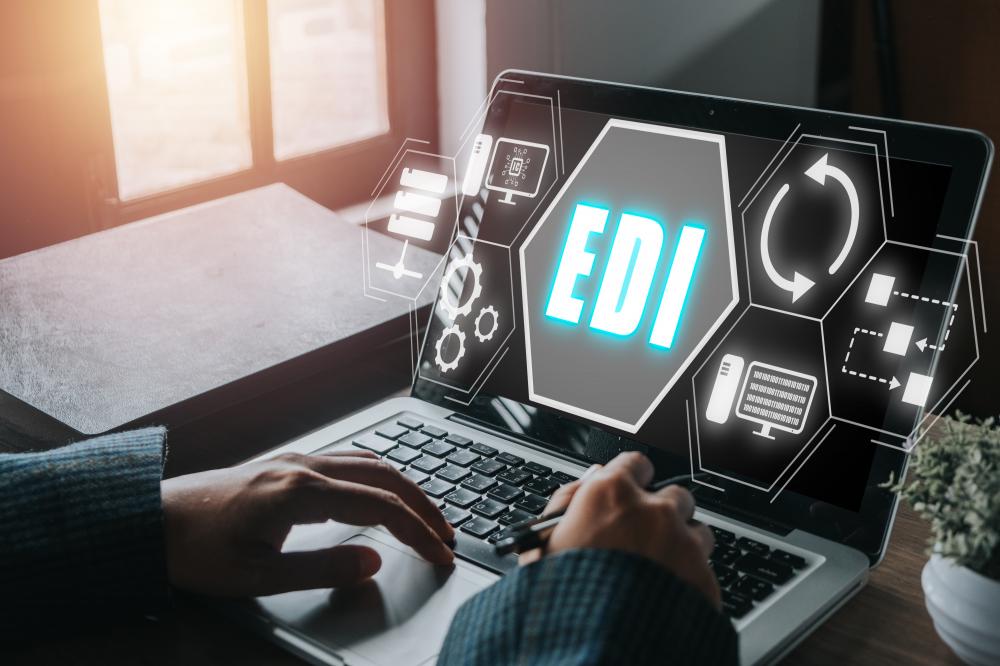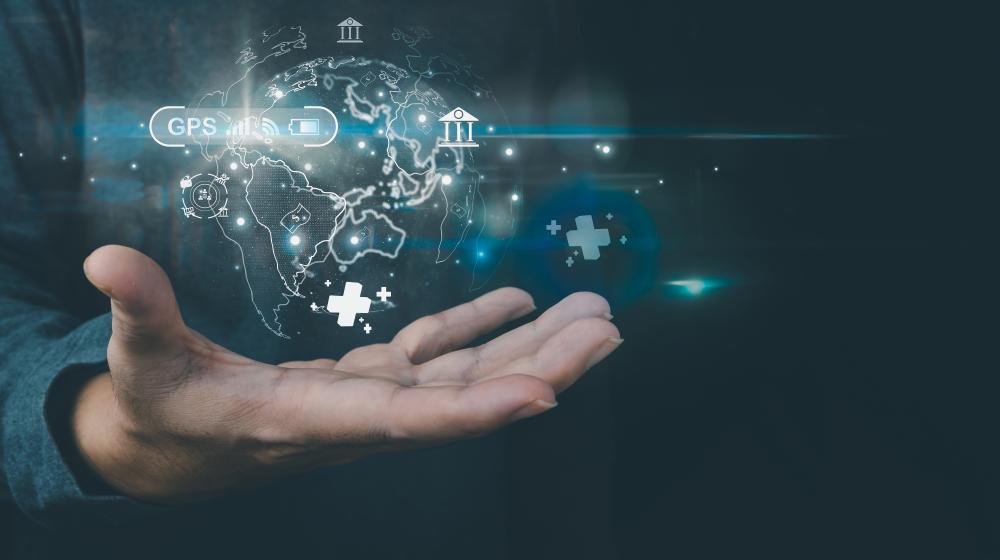healthcare EDI transactions
Table of Contents
Understanding Healthcare EDI Transactions Benefits of Efficient EDI Exchange Real-World Applications of Healthcare EDI Challenges and Solutions in Healthcare EDI Innovation and Forward-Thinking in EDI Personal Touch and Customer Engagement Looking to the Future of Healthcare EDI What are examples of EDI in healthcare? What is 837 EDI transactions in healthcare? What are the most common EDI transactions? What are the formats for healthcare EDI? How is healthcare EDI expected to evolve in the future? Resources for Healthcare EDI Transactions
Understanding Healthcare EDI Transactions

In my years at HIPAAsuite, I've seen firsthand how healthcare EDI transactions revolutionize the way we handle medical data. These electronic exchanges allow for seamless communication between healthcare providers, payers, and patients. They're critical for billing, claims management, eligibility verification, and more. But what really are healthcare EDI transactions, you might wonder?
EDI, or Electronic Data Interchange, is a technology that's akin to a digital messenger, carrying vital and sensitive healthcare information securely across the digital universe. These transactions use standardized formats to ensure that data interpreted by one system can be understood by another, thus creating a universal language for healthcare communication. It's a bit like everyone in the industry agreeing to speak the same dialect to avoid any miscommunication.
The beauty of these transactions lies in their efficiency. Manual processes, with their inherent risks of errors and delays, are replaced by automated systems that work tirelessly around the clock. At HIPAAsuite, we firmly believe that this automation is the cornerstone of modern healthcare administration.
Benefits of Efficient EDI Exchange
Our customers often tell us how healthcare EDI transactions have changed their operations for the better. Perhaps the most pronounced benefit is the improvement in efficiency. EDI reduces the time it takes to process claims from weeks to mere days or even hours, which can feel like a miracle in the administrative world.
Another key advantage is cost reduction. With less paper and fewer manual tasks, organizations save on materials and overhead, and who doesn't like savings? But perhaps most importantly, healthcare EDI transactions reduce errors. An incorrectly filed claim can delay treatment or payment, but EDI's standardized formats help avoid such pitfalls, ensuring patient data is accurate and secure.
Security is a priority, and as a provider of HIPAA-compliant software, we take pride in offering solutions that safeguard patient information. Healthcare is personal, and so is the data. Ensuring its safety is not just a matter of regulation but of trust.
Real-World Applications of Healthcare EDI
What do healthcare EDI transactions look like in action? Imagine a patient visiting their doctor's office. Once their visit is complete, a healthcare claim (an 837 transaction, for those in the know) is generated and sent to the payer. This is just one example of a healthcare EDI transaction, but there are many more, each with a specific purpose and format.
There are also eligibility inquiries (270/271 transactions) that verify patient coverage before services are rendered. Then, the payment advice transactions (835) swoop in to detail how a claim was paid. And these are just the tip of the iceberg. Each transaction is a thread in the fabric of healthcare communication, linking together providers, payers, and patients in a dance of data.
Healthcare EDI transactions are not just for large hospital systems or insurance companies. Smaller practices, billing services, and even individual providers utilize EDI to streamline their operations, thanks to organizations like HIPAAsuite, which democratize access to EDI technology.

Challenges and Solutions in Healthcare EDI
It's not always smooth sailing in the world of healthcare EDI transactions. Sometimes, users face technical or regulatory challenges that can be daunting. As healthcare continues to evolve, so too do the standards and requirements for EDI transactions.
At HIPAAsuite, we've encountered these challenges head-on. Our suite of products is designed not only to address the complexity of EDI standards but also to ease the transition for healthcare entities wary of adopting new technologies. Remember, the goal is not to complicate but to simplify.
From eligibility verification to claim submission and payment processing, our software covers the gamut of healthcare EDI transactions. We understand the maze of regulations and requirements, and we've built our tools to navigate it effectively. Our solutions are crafted to be user-friendly for those with limited IT experience, ensuring a gentle learning curve.
Innovation and Forward-Thinking in EDI
As veterans in the EDI space, we at HIPAAsuite have seen trends come and go, but one thing remains constant: the need for innovation. The healthcare industry is always on the move, and keeping up requires a commitment to development and forward-thinking.
We're constantly updating our software to keep pace with changes in EDI standards and healthcare regulations. But more than that, we're looking ahead, anticipating the needs of tomorrow's healthcare industry. Our commitment to innovation ensures that our customers are never left behind in an ever-evolving landscape.
But innovation isn't just about technology; it's about people. We listen to our customers, understanding their unique challenges and experiences. Their insights drive our product development, ensuring that we're not just innovating for innovation's sake, but to meet real-world needs.
In this ever-changing world, healthcare EDI transactions are a stabilizing force. They ensure that no matter how the industry shifts, the flow of information remains consistent and reliable--a promise that we at HIPAAsuite take to heart.
Personal Touch and Customer Engagement
Our story isn't just about software; it's about the people who use it. At HIPAAsuite, we're not content to be faceless providers. We seek genuine engagement with our customers, offering personalized support and resources to ensure they get the most out of our products.
Whether it's through comprehensive documentation, video tutorials, or interactive customer stories, we strive to make healthcare EDI transactions approachable. Our goal is to remove the mystique of EDI and make it as natural as any other daily task for our users.
And when challenges arise, we're there. Our support team isn't just a call center; it's a group of dedicated professionals who understand the nuances of healthcare EDI transactions. They work tirelessly to ensure that any issue, no matter how small, is addressed with care and expertise.
Looking to the Future of Healthcare EDI
In closing, healthcare EDI transactions have become the backbone of modern healthcare operations. They allow for the efficient, secure, and accurate exchange of vital information. At HIPAAsuite, our goal has always been to break down the barriers to technology adoption, to serve as a beacon through the complex landscape of healthcare data exchange.
We embrace the future with open arms, knowing that it brings new challenges but also new opportunities. As we look ahead, we're excited to continue providing the tools and support that healthcare providers need to thrive in the digital age. After all, healthcare EDI transactions are more than just data points; they're the connections that keep the heart of healthcare beating strongly.
At HIPAAsuite, we're proud to be a part of this journey. We're not just selling software; we're creating a community--a family of healthcare professionals who are as passionate about the future as we are. Together, we're charting a course towards a more efficient, secure, and connected healthcare system.

What are examples of EDI in healthcare?
Electronic Data Interchange (EDI) in healthcare encompasses a wide range of transactions that streamline administrative processes. A prime example is the 837 transaction, which is a standard format for transmitting healthcare claims to payers such as insurance companies. Then there's the 270/271 transaction set, which is used for eligibility inquiries and responses. Healthcare providers send a 270 inquiry to check a patient's eligibility, and the payer sends back a 271 response with the patient's coverage details. The 835 transaction, also known as the Electronic Remittance Advice (ERA), provides details about claim payments including any adjustments and denials.
Imagine a scenario at our practice where a patient's procedure is already pre-authorized because we used an 278 EDI transaction to secure approval swiftly. After the treatment, we submit an 837 claim and receive an 835 ERA, detailing the payment made by the insurance company. EDI in healthcare covers many other transactions, including enrollment information (834), premium payments (820), claim status inquiries (276/277), and more. These transactions form a digital ecosystem that vastly improves the efficiency and reliability of healthcare data management.
What is 837 EDI transactions in healthcare?
The 837 transaction is a workhorse in the world of healthcare EDI. It's the electronic equivalent of a paper claim form and is the primary method by which healthcare providers submit claims to insurers and payers. This could include charges for consultations, procedures, and treatments provided to patients. At HIPAAsuite, we help our clients convert their billing information into the 837 format, ensuring all pertinent details are accurately captured and compliant with the required standards. This facilitates faster claims processing and significantly reduces the likelihood of errors that could delay payment. The 837 comes in different types such as Institutional (837I), Professional (837P), and Dental (837D), catering to various sectors within healthcare.
What are the most common EDI transactions?
While the 837 claim is widely recognized, there are several other common EDI transactions that are integral to healthcare operations. The 835 transaction that providers receive with payment details from payers, is one of these, giving insights into the adjudication of claims. The 270/271 transaction is frequently used to determine patient eligibility and coverage details. We also see a high volume of 276/277 transactions, which are claims status requests and responses, providing updates on where a claim stands in the process. Let's not forget the importance of the 278 transaction, used for obtaining authorization for healthcare services. These transactions form a standard set that caters to the day-to-day administrative functions of healthcare providers and payers alike.
What are the formats for healthcare EDI?
Healthcare EDI formats are quite specific, governed by the American National Standards Institute (ANSI) X12 standards. The formats provide the structure for a range of transactions, including claims, enrollment, eligibility, and payment information. Here at HIPAAsuite, we ensure that all electronic documents adhere to these strict standards, which are designed to be universally understood and processed by different computer systems within the healthcare industry. It's pivotal to get the format right; even a minor error can lead to a rejected claim or an incorrect payment. This is why our products are built with precision and ease of use in mind, to facilitate the accurate and efficient exchange of data.
How is healthcare EDI expected to evolve in the future?
The future of healthcare EDI is incredibly exciting, with emerging technologies promising even greater integration and efficiency. Artificial intelligence and machine learning are beginning to play roles in predictive analytics and automated decision-making processes. At HIPAAsuite, we're actively exploring these avenues to ensure that we stay ahead of the curve. Blockchain technology is another area with potential for secure and immutable record-keeping, which could revolutionize how we think about data security and patient privacy.
One of the goals we have is to continue making EDI more accessible and user-friendly, especially as telehealth and remote patient monitoring become more prevalent. This will likely involve developing new transactions or adapting existing ones to meet the changing needs of healthcare providers and patients. It's an ongoing journey, but one that we're committed to leading, keeping the heartbeat of healthcare EDI transactions strong and steady for all our clients and their patients.
Resources for Healthcare EDI Transactions
- Centers for Medicare & Medicaid Services (CMS) - Electronic Billing & EDI Transactions: The CMS offers guidelines, resources, and educational materials relating to electronic billing and EDI transactions in the context of Medicare and Medicaid services. https://www.cms.gov/Medicare/Billing/ElectronicBillingEDITrans
- Office of the National Coordinator for Health Information Technology (ONC) - Health IT Standards: ONC provides information on health IT standards, including those relevant to EDI transactions, to ensure interoperability and improve healthcare delivery. https://www.healthit.gov/topic/standards-technology
- Workgroup for Electronic Data Interchange (WEDI) - EDI Resources: As a leading authority on the use of healthcare IT to improve healthcare information exchange, WEDI offers resources that can help organizations understand and implement EDI transactions. https://www.wedi.org/resources/
- Health Information and Management Systems Society (HIMSS) - Electronic Data Interchange: HIMSS provides a comprehensive overview of EDI in healthcare, detailing the basics, benefits, and considerations for implementation. https://www.himss.org/resources/electronic-data-interchange
- U.S. Department of Health & Human Services (HHS) - HIPAA Standard Transactions: The HHS website offers insight into the HIPAA standard transactions, which are a subset of healthcare EDI transactions aimed at ensuring the privacy and security of healthcare information. https://www.hhs.gov/hipaa/for-professionals/covered-entities/transaction-code-sets/index.html
- National Committee on Vital and Health Statistics (NCVHS) - Standards: NCVHS assists and provides recommendations to the Secretary of Health and Human Services regarding health data standards, including those related to EDI transactions. https://ncvhs.hhs.gov/subcommittees/standards/
- American Health Information Management Association (AHIMA) - EDI Transactions and Code Sets: AHIMA offers resources to help healthcare professionals understand and efficiently manage EDI transactions and the accompanying code sets. http://www.ahima.org/topics/edicodesets


































